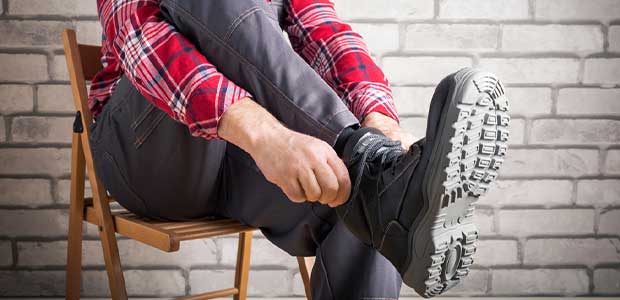
Ensuring Safety with Quality Footwear
There are four key factors to keep in mind when choosing the right safety footwear for workers.
- By Tito Warren
- Mar 01, 2023
Safety footwear provides the foundation for workers on the job: their feet keep them moving, keep them working and allow for responsibilities like lifting, standing and building to take place without a hitch. So, when building a safety program, you may ask yourself: How do I use footwear to best ensure the safety and productivity of my employees?
There are so many best practices to keep in mind when it comes to safety that it can be challenging to decide where to start. I’ve identified a handful of focus areas that lay a strong foundation for any program.
Let’s explore the four key factors you should think about when developing or updating your safety and PPE programs this year.
Fit Comes First
A work boot that doesn’t fit well isn’t as safe as it could be.
When we consider safety footwear, we’re looking at things like specifications, style, materials and brand reputation. Each of these crucial factors makes a difference, but if the boot doesn’t fit correctly, that will undermine all of the rest of these considerations.
Poorly fitted footwear can be the cause of injuries to the feet, legs and back thanks to muscle strain, ankle sprains, slips, trips and falls, lack of balance and overcompensating with a different body area.1 When a boot fits well, it’s reliable. You know that you’re able to perform the duties on the job without feeling the need to overcompensate.
For example, if an employee is unloading building materials from a truck, they need to be able to rely on their safety footwear to keep them steady. If they are wearing a boot that is too large, the employee is at a higher risk for a slip, trip or fall, or the boot may cause lower back strain by making the worker overcompensate for an unsteady stance. They’ve now compromised their own safety and may not be able to complete the job, creating a larger ripple effect on the work site.
Even outside of outright injuries, poorly fitted work boots can lead to increased fatigue and long-term ramifications such as knee problems, joint pain and poor circulation. Increased fatigue throughout the day leading to decreased situational awareness can create the circumstances for an accident even when an injury is not the cause.
This article originally appeared in the March 1, 2023 issue of Occupational Health & Safety.